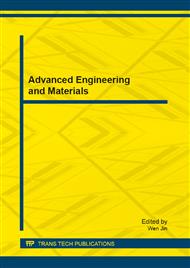p.269
p.275
p.280
p.286
p.292
p.298
p.304
p.310
p.319
What Is the Optimum Cover Factor?
Abstract:
When fabricating a small diameter arterial prosthesis, the performance requirements include controlling dimensions, maintaining a uniform structure, ensuring superior mechanical properties as well as excellent biocompatibility. Material selection and fabricating methods can influence these factors. In this study, three 100% polyester prostheses, three bicomponent polyester/silk prostheses and three 100% silk prostheses were woven into seamless tubular prototype prostheses with three different basic weaves. After degumming/scouring they met the target inner diameter of 3.83 ± 0.30 mm which demonstrates that weaving is a precise and accurate way to manufacture small caliber arterial prostheses. In conclusion, the woven samples had a uniform wall structure along their strength and a range of low water permeability values and probe bursting strengths depending on their cover factor.
Info:
Periodical:
Pages:
292-297
Citation:
Online since:
February 2013
Authors:
Keywords:
Price:
Сopyright:
© 2013 Trans Tech Publications Ltd. All Rights Reserved
Share:
Citation:


